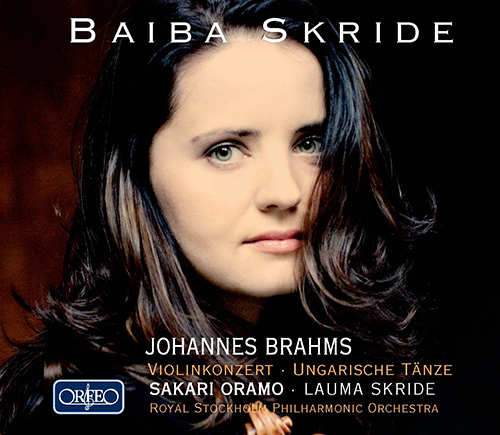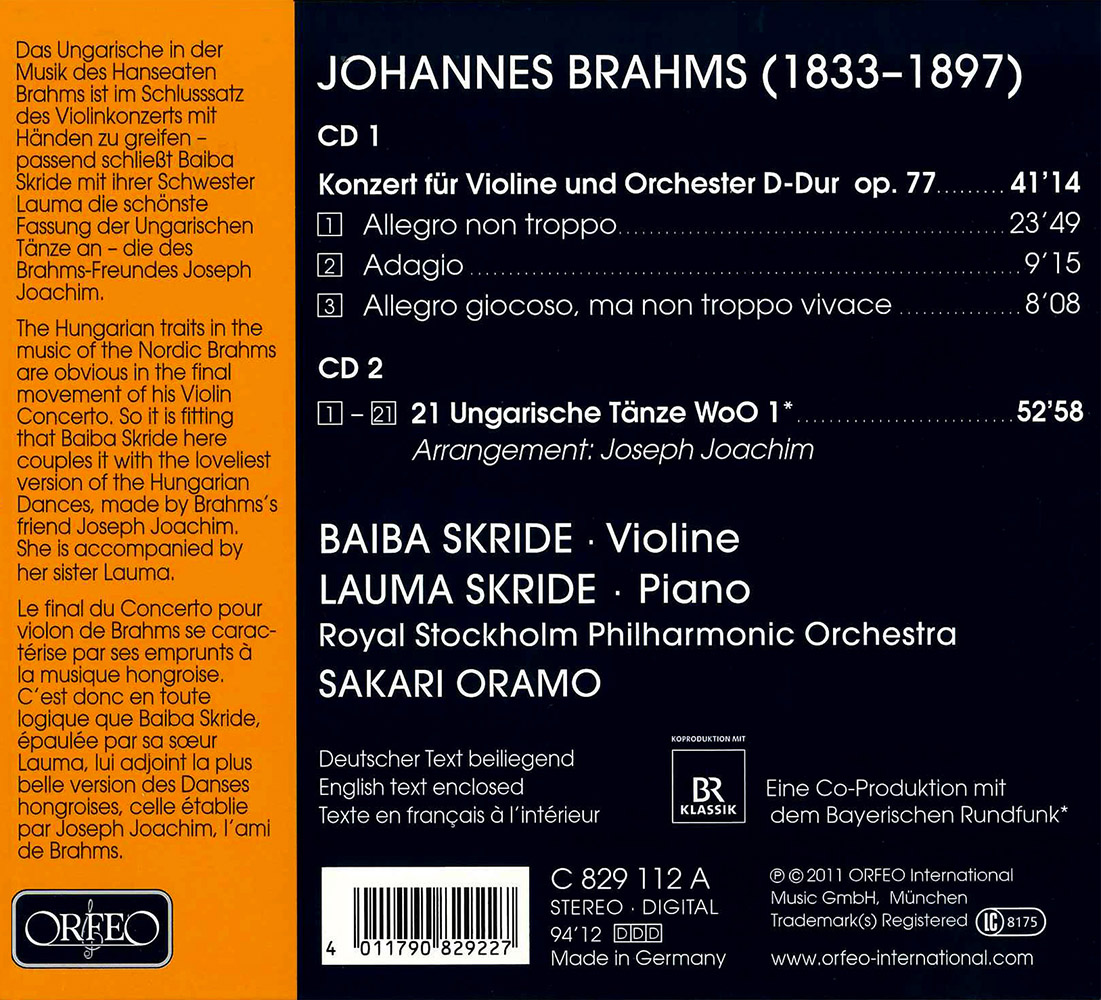Brahms: Violin Concerto - Hungarian Dances
Baiba Skride is not just one of the most sought-after artists when it comes to finding a soloist for one of the great violin concertos. She is also much in demand for chamber music. This makes her ideal for her new recording, her first on the ORFEO label, devoted to the work of Johannes Brahms. It is a highly promising start to our collaboration with this First-Prize winner of the Queen Elisabeth Competition in Brussels in 2001. Besides Brahms’s Violin Concerto, she here offers his Hungarian Dances in the version for violin and piano made by Joseph Joachim. The long-standing musical partnership of Brahms and Joachim is reflected doubly here, for Joachim was also the dedicatee of the Concerto. Baiba Skride’s Brahms interpretations are themselves characterized by happy musical constellations. In Sakari Oramo she has a conductor who is himself a violinist and who offers the appropriate momentum with the Royal Philharmonic in Stockholm. 
Baiba and Lauma Skride
Foto: Marco BorggreveOne clearly hears the energy and vigour with which every instrumental grouping plays. Thus the great arch of the work is perfectly formed, from the solo interjections (not just from the violin!) to the symphonic dialogue between the partners. The chamber-music intimacy of the Hungarian Dances could not be achieved more powerfully or more beautifully than in Baiba Skride’s tried-and-tested duo partnership with her sister Lauma Skride at the piano. Unhindered by the „pianistic“ violin part with its many double stoppings, Baiba develops an ensemble that is in tempo and in its gestures carefully moulded with the piano. The piano may have what is clearly an accompanying part, and Lauma Skride certainly adapts to her sister’s playing in an unpretentious manner, but nor is her part understated. The result is a performance of these atmospheric dances that is at times resilient and fiery, at other times melodic, gentle and smooth. They belong just as much to Brahms’s art as do the formal stringency and unity we find in his large-scale works – and it is all the lovelier when we find all of this on a single CD recording.

















